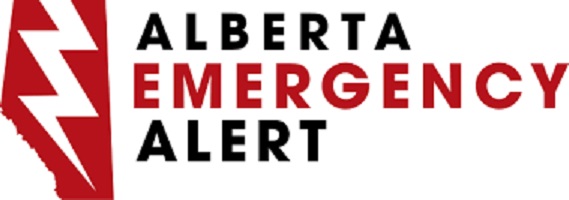Alberta
Hundreds of young athletes grow more anxious by the day – ACAC season a series of “options”

While addicts ponder cross their fingers at every hint the National Hockey League’s big-money dance toward a playoff schedule and perhaps a Stanley Cup final sometime this year might be successful, hundreds of young athletes grow more anxious day by day, hoping they get to play at least part of their schedules in various college sports.
And money is close to the least of the concerns for these kids.
The five-day annual spring meeting of Alberta College Athletic Conference institutions ended a week ago with little clarity on the issue although CEO Mark Kosak and various other officials in the 18-team league came away – mostly – with a positive outlook.
As expected, a wide series of “options and alternate start dates” was devised and analyzed, he said.
A committee established to evaluate likely effects of the coronavirus pandemic will meet at least once a week in preparation for “a really big and important meeting dealing with massive variables” on June 25. Many essential details applying to all sports – when to start a season, length of schedule, possible change of regular play into tournament-style competition – will be put on the table.
Progressively, Aug. 1, a date in September and others in January have been debated in depth.
All options remain open, Kosak said, pointing out that safety of athletes, students, spectators and staff remains as the dominant factor in every discussion. Principals at some institutions have made it clear they do not expect any sports to be played in what normally is the ACAC fall season. Close to 50 per cent of the principals have made clear their concern that moving too quickly in one sport or one schedule might destroy all the good that the current cautious program may achieve. If necessary, all games would have to be sacrificed.
The veteran administrator posed one conservative, hypothetical and frightening prospect: A school from a difficult place (where control of COVID-19 might not be at the ideal level) when it goes to play a road game in a safer area. Then, say, one player on the home team comes down with the virus.
“What options are open if that happens?” Obviously, no organization could possibly benefit from such an occurrence. “I understand fully what those presidents are concerned about. At this point, they’re all justified to be worried about the potential for an outbreak on campus.”
Fortunately, Kosak said, all of the presidents recognize the value of college sports, mentioning the appeal of an athletic event, additional enrolment and potential gate receipts. He did not mention students’ enthusiam when they support a successful individual or team, but that element has been demonstrated for as long as athletes have competed at any level of education.
Cost of operation has prompted some ACAC schools to make deep cuts in athletic expenses. “We all have a similar problem” said Kosak. “Each school deals with it as best they can.”
Hockey budgets have been questioned most severely. A few weeks ago, NAIT Ooks head coach Tim Fragle accepted an offer to become head coach and general manager of the Trail Smoke Eaters in the Junior A British Columbia Hockey League.
They are not, of course, the fabled senior Smoke Eaters who won the World Hockey Championship for Canada in 1961, but Fragle treats the switch as a sort of homecoming. He is a former Smoke Eater captain, having played there after his career with the Sherwood Park Crusaders. Fragle was named coach of the year three times for NAIT.
Former Ooks standout Scott Fellnermayr moves up from the assistant’s job to replace Fragle as head coach.
WCBL season cancelled ending the Edmonton Prospects run at Re/Max Field
Alberta
Alberta Emergency Alert test – Wednesday at 1:55 PM

Minister of Public Safety and Emergency Services Mike Ellis issued the following statement on the upcoming Alberta Emergency Alert test:
“On Nov. 19, 2025, Alberta will take part in a scheduled test of the National Public Alerting System. At 1:55 p.m., an Alberta Emergency Alert test will be issued across multiple channels including television, radio, wireless devices, websites, social media, the Alberta Emergency Alert mobile app and directly to compatible cellphones across the province.
“While alert interruptions can be inconvenient, these tests are essential. They help us identify and resolve technical issues, ensuring the system functions properly when it matters most. Regular testing, typically held in May and November, is a key part of keeping Albertans informed during real emergencies such as tornadoes, wildfires, floods and Amber Alerts.
“To stay connected, I urge all Albertans to download the Alberta Emergency Alert app, which delivers critical warnings directly to your phone. To receive alerts, your mobile device must be compatible, connected to an LTE 4G network or higher, or connected to Wi-Fi with the app installed. If your phone is on silent, the alert will still appear but may not produce sound.
“This test is also a valuable opportunity to talk with your household, friends and coworkers about emergency preparedness. Questions to ask:
- Do you have an emergency kit with enough supplies for at least 72 hours?
- Have you included essentials like water, non-perishable food, flashlights, batteries and a first aid kit?
- Do you have copies of important documents and a list of emergency contacts?
- Is your kit stored in an easy-to-access location and does everyone know where it is?
“Preparedness doesn’t have to be complicated. Simple steps like having an emergency plan and essential supplies can make a big difference to protect yourself and your household.”
Related information
Alberta
Carney government’s anti-oil sentiment no longer in doubt

From the Fraser Institute
The Carney government, which on Monday survived a confidence vote in Parliament by the skin of its teeth, recently released a “second tranche of nation-building projects” blessed by the Major Projects Office. To have a chance to survive Canada’s otherwise oppressive regulatory gauntlet, projects must get on this Caesar-like-thumbs-up-thumbs-down list.
The first tranche of major projects released in September included no new oil pipelines but pertained largely to natural gas, nuclear power, mineral production, etc. The absence of proposed oil pipelines was not surprising, as Ottawa’s regulatory barricade on oil production means no sane private company would propose such a project. (The first tranche carries a price tag of $60 billion in government/private-sector spending.)
Now, the second tranche of projects also includes not a whiff of support for oil production, transport and export to non-U.S. markets. Again, not surprising as the prime minister has done nothing to lift the existing regulatory blockade on oil transport out of Alberta.
So, what’s on the latest list?
There’s a “conservation corridor” for British Columbia and Yukon; more LNG projects (both in B.C.); more mineral projects (nickel, graphite, tungsten—all electric vehicle battery constituents); and still more transmission for “clean energy”—again, mostly in B.C. And Nunavut comes out ahead with a new hydro project to power Iqaluit. (The second tranche carries a price tag of $58 billion in government/private-sector spending.)
No doubt many of these projects are worthy endeavours that shouldn’t require the imprimatur of the “Major Projects Office” to see the light of day, and merit development in the old-fashioned Canadian process where private-sector firms propose a project to Canada’s environmental regulators, get necessary and sufficient safety approval, and then build things.
However, new pipeline projects from Alberta would also easily stand on their own feet in that older regulatory regime based on necessary and sufficient safety approval, without the Carney government additionally deciding what is—or is not—important to the government, as opposed to the market, and without provincial governments and First Nations erecting endless barriers.
Regardless of how you value the various projects on the first two tranches, the second tranche makes it crystal clear (if it wasn’t already) that the Carney government will follow (or double down) on the Trudeau government’s plan to constrain oil production in Canada, particularly products derived from Alberta’s oilsands. There’s nary a mention that these products even exist in the government’s latest announcement, despite the fact that the oilsands are the world’s fourth-largest proven reserve of oil. This comes on the heels on the Carney government’s first proposed budget, which also reified the government’s fixation to extinguish greenhouse gas emissions in Canada, continue on the path to “net-zero 2050” and retain Canada’s all-EV new car future beginning in 2036.
It’s clear, at this point, that the Carney government is committed to the policies of the previous Liberal government, has little interest in harnessing the economic value of Canada’s oil holdings nor the potential global influence Canada might exert by exporting its oil products to Asia, Europe and other points abroad. This policy fixation will come at a significant cost to future generations of Canadians.
-

 Daily Caller2 days ago
Daily Caller2 days ago‘Holy Sh*t!’: Podcaster Aghast As Charlie Kirk’s Security Leader Reads Texts He Allegedly Sent University Police
-

 Crime4 hours ago
Crime4 hours ago‘Modern-Day Escobar’: U.S. Says Former Canadian Olympian Ran Cocaine Pipeline with Cartel Protection and a Corrupt Toronto Lawyer
-

 Great Reset2 days ago
Great Reset2 days agoCanadian government forcing doctors to promote euthanasia to patients: report
-

 Alberta2 days ago
Alberta2 days agoSylvan Lake football coach fired for opposing transgender ideology elected to town council
-

 Carbon Tax1 day ago
Carbon Tax1 day agoCarney fails to undo Trudeau’s devastating energy policies
-

 Daily Caller16 hours ago
Daily Caller16 hours agoDemocrats Explicitly Tell Spy Agencies, Military To Disobey Trump
-

 Addictions1 day ago
Addictions1 day agoActivists Claim Dealers Can Fix Canada’s Drug Problem
-

 Health1 day ago
Health1 day agoNEW STUDY: Infant Vaccine “Intensity” Strongly Predicts Autism Rates Worldwide




